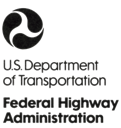
1200 New Jersey Ave., SE
Washington, DC 20590
March 23, 2012
In Reply, Refer To: HOTM-1
Dear Colleague,
The Federal Highway Administration's (FHWA) Office of Operations and Office of Planning, Environment, and Realty, in partnership with the Federal Transit Administration's (FTA) Office of Planning and Environment, have developed a new product, The Role of Transportation Systems Management & Operations in Supporting Livability and Sustainability: A Primer. This document was developed in collaboration with a broad array of transportation professionals and experts in sustainability. Representatives from State departments of transportation, metropolitan planning organizations, and local governments, as well as non-governmental organizations, transportation industry associations, and other Federal agencies provided insights and guidance through a peer exchange workshop and reviews of the document throughout its development. Input was also solicited from international practitioners in a working session during the Transportation Research Board Annual Meeting in January 2011 to gather input on best practices worldwide.
This primer is part of FHWA's suite of Planning for Operations products. The primer shows that how transportation systems are managed and operated affects the communities they serve in many ways, with implications for mobility and accessibility, safety, community life, economic vitality, and environmental quality. It describes how a comprehensive, balanced approach to management and operations (M&O) can advance livability and sustainability, and identifies key principles or "fundamentals" for managing and operating transportation systems in ways that support livability and sustainability.
Case examples from across the nation and abroad illustrate different ways in which the linkage has been made between M&O and livability and sustainability and provide a guide for implementing these ideas. Examples of operations strategies described include providing real-time travel information to help individuals make better travel choices; ensuring that traffic signals are timed to improve mobility and safety for bicyclists, pedestrians, and transit, while reducing unnecessary delay for drivers; and demand management techniques for travelers and freight, including efforts to encourage shifting trips to off-peak periods to reduce traffic congestion and emissions. The document also provides a vision of how the regional transportation system could look in the future if M&O strategies were comprehensively implemented to advance livability and sustainability goals. It emphasizes that efforts to create more livable, sustainable communities should account for all aspects of transportation – not only planning and project development, but also management and operations.
This primer can be viewed electronically by visiting the U.S. DOT website on Planning for Operations at http://www.plan4operations.dot.gov. We look forward to receiving your feedback, reactions, and experiences in implementing these concepts and utilizing this resource. Please direct any comments, questions, and suggestions to Wayne Berman at wayne.berman@dot.gov or 202-366-4069.
Sincerely yours,
Robert E. Arnold, Director
FHWA Office of Transportation Management
James A. Cheatham, Director
FHWA Office of Planning
Charles Goodman, Director
FTA Office of Systems Planning

